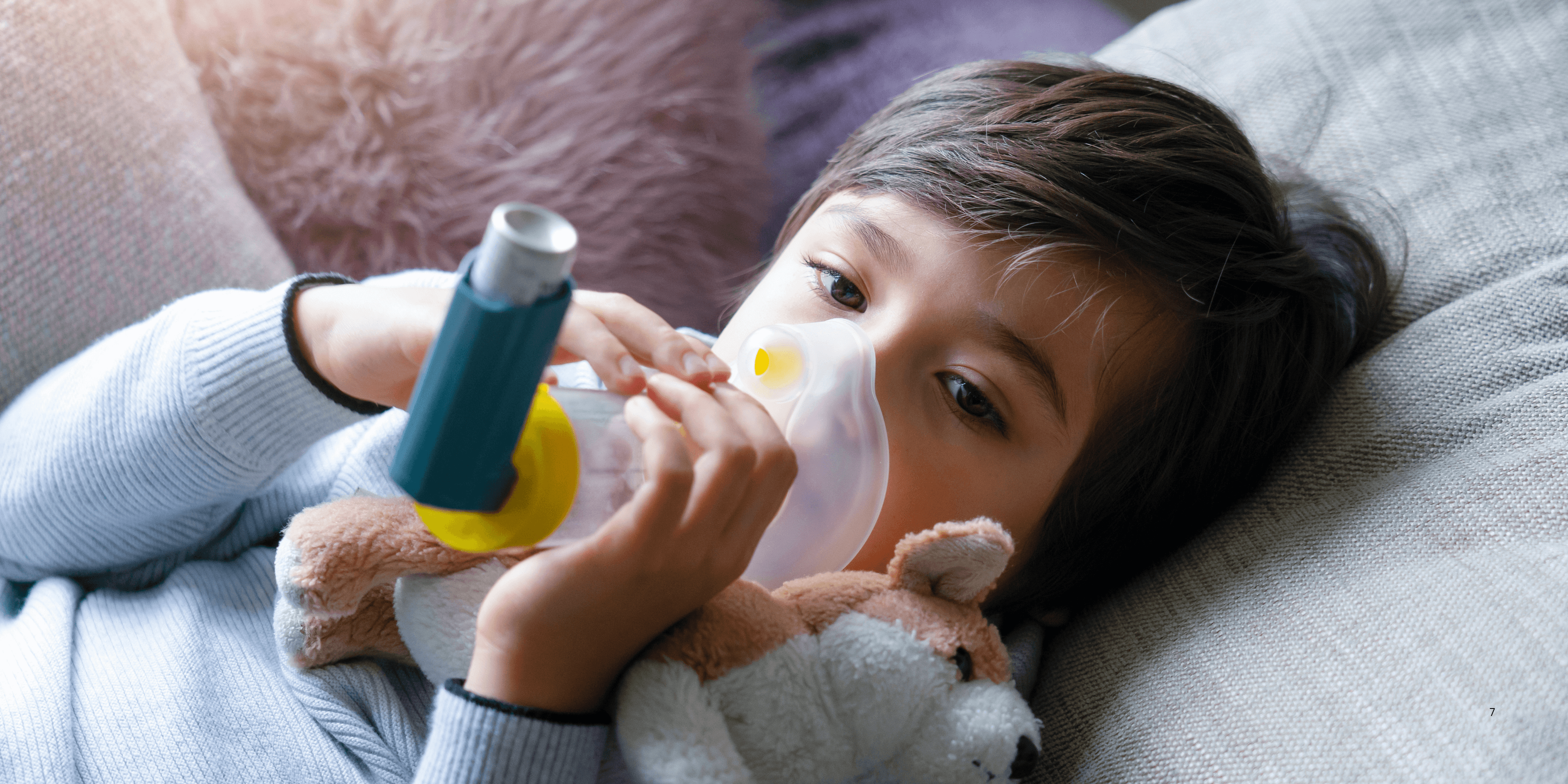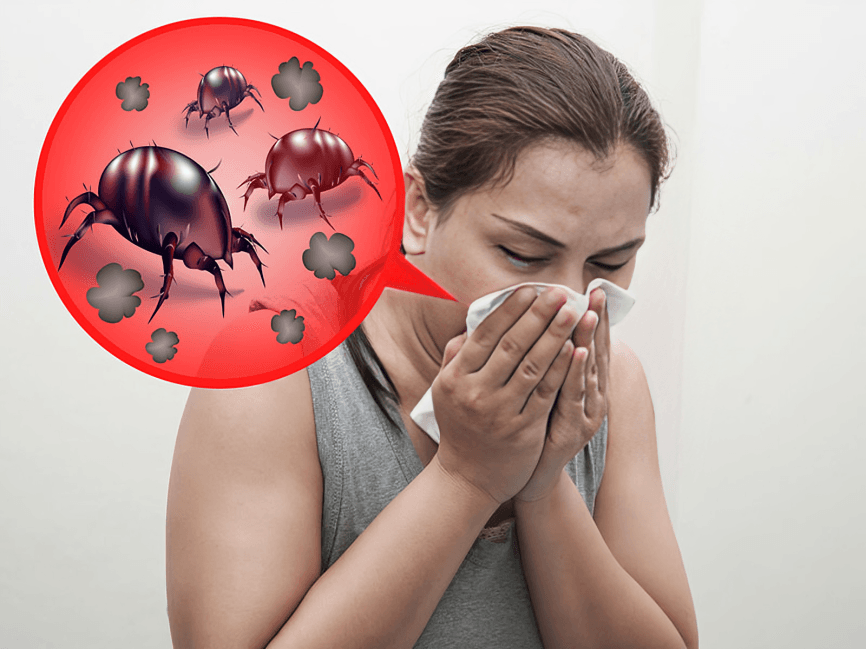
“
Managing childhood allergies and asthma is essential for ensuring a child’s health and comfort. These conditions can affect daily life, especially if not properly handled. Parents need practical knowledge to reduce allergens, recognize warning signs, and use medications wisely. Awareness, early diagnosis, and regular care are vital when managing childhood allergies and asthma effectively.1
1
”
Pediatricians stress that early diagnosis of allergies and asthma helps identify triggers, prevent severe reactions, and start treatment early to manage symptoms effectively.1
Allergies and asthma in children often have a genetic link, meaning if one or both parents suffer from them, the child has a significantly higher chance of developing these chronic conditions as well. 2

Dust mites are among the most common indoor allergens that trigger childhood asthma attacks and allergic reactions. Using allergen-proof covers and washing bedding weekly in hot water reduces exposure.
Children with asthma must avoid tobacco smoke entirely. Even secondhand smoke from another room can cause wheezing, breathlessness, and long-term damage to their growing lungs and immune response. 3
Food allergies can lead to severe reactions such as anaphylaxis in children. Common culprits include peanuts, dairy, eggs, and shellfish. Reading ingredient labels becomes a vital daily habit for parents. 4
Exercise-induced asthma is not uncommon in children. With the right treatment and warm-up routines, children can still enjoy sports safely and keep their lungs active and healthy. 5
Children exposed to mold in damp environments are more likely to develop allergy symptoms and asthma. Ventilation, dehumidifiers, and prompt mold cleanup can help prevent respiratory issues. 6
Allergists often recommend immunotherapy (allergy shots or drops) for older children whose allergic reactions remain severe despite other treatments, helping desensitize the immune system over time. 7
Maintaining a hypoallergenic environment at home—by removing carpets, keeping pets out of bedrooms, and using air purifiers—can make a major difference in managing asthma and allergy symptoms. 8

Cold air can constrict airways in children with asthma, especially in winter. Wearing a scarf over the nose and mouth can warm inhaled air and prevent asthma attacks triggered by cold exposure.
Asthma medications are divided into quick-relief (like albuterol) and long-term controllers (like inhaled corticosteroids). Teaching children when and how to use each type helps them manage symptoms confidently. 9
Parents must communicate closely with schools about their child’s allergies and asthma. Teachers and staff should be aware of triggers, emergency medications, and specific action plans for safety. 10
A written asthma action plan helps families manage symptoms. It includes medication instructions, triggers to avoid, and steps to take when symptoms worsen or don't respond to treatment. 11
Children who develop allergies to insect stings (like bees or wasps) should carry an epinephrine auto-injector. Quick administration during an allergic reaction can prevent life-threatening anaphylaxis. 12
Early-life exposure to diverse microbes through outdoor play and non-sterile environments may lower the risk of allergies, a theory called the “hygiene hypothesis” supported by emerging studies. 13

Some children outgrow food allergies as they age, particularly to milk, eggs, and soy. However, others—like peanut or shellfish allergies—are more likely to persist and require lifelong avoidance.
Children with severe eczema often develop food or environmental allergies, known as the "atopic march." Monitoring skin health and allergy symptoms helps in early intervention and long-term care. 14
Anxiety and emotional stress can worsen asthma symptoms in children. Helping them manage emotions, practice breathing techniques, and stay calm during attacks supports both mental and physical health. 15
Non-allergic triggers like strong smells, perfumes, cleaning sprays, and air pollution can also irritate a child’s airways, even without causing traditional allergy symptoms, and must be avoided. 16
Pediatric allergists and pulmonologists team up to create personalized plans using education, medication, and environment control for effective, long-term allergy and asthma management in children.17


